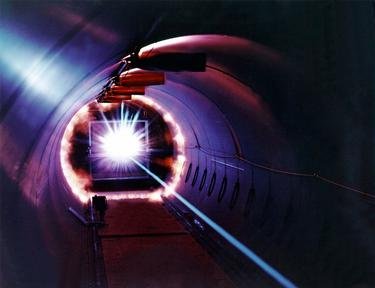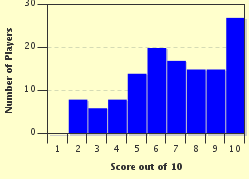Quiz Answer Key and Fun Facts
1. The first elementary particle to be discovered, the electron is a marvelous and useful find. Chemistry is largely a matter of electrons and their distribution in atoms and molecules; electricity, with all its wonders, is based on an understanding of electron flow. What does it mean to say that it's an elementary particle?
2. The lightest of all the quarks, the up quark is a common constituent of everyday matter. Of the following composite particles, which does NOT contain any up quarks or up anti-quarks?
3. Often seen with the up quark, its partner in the "first generation of matter", the down quark is slightly heavier and just as fun. In terms of e (the charge of a proton), what is the electric charge of a down quark?
4. Predicted in 1930 by the theorist Wolfgang Pauli, the electron neutrino was initially controversial. Pauli himself felt bad about it. "I have done a terrible thing," he said: "I have postulated a particle that cannot be detected." Luckily for Pauli's peace of mind, the electron neutrino was in fact detected in 1956. Which of these places is NOT a source of electron neutrinos or electron antineutrinos?
5. Let's move on to the second generation of matter. Particle physicists in the 1950s were very concerned about the "strangeness" of some particles they were seeing, which had much longer lifetimes than the others. Careful study of the problem revealed an underlying structure -- a symmetry -- to the particles and their properties. What religious-sounding name was given to this pattern?
6. The positively charged, second-generation quark -- the third most massive of all the quarks -- has the symbol "c". What endearing name is given to this quark?
7. The muon is the second-generation equivalent of the electron: same charge, same spin, much larger mass. Muons decay to electrons pretty quickly after they're created, but they're still a part of daily life. Which of the following groups of people has the highest exposure to muons?
8. Muon neutrinos couple to muons via the weak force, just as electron neutrinos couple to electrons. But neutrinos are strange particles, and a muon neutrino created in the atmosphere or in an accelerator might well be detected as an electron neutrino in a detector miles away. What does the phenomenon of neutrino oscillations tell us about neutrinos?
9. On to the third generation of matter! Our next quark, the "b" quark, is negatively charged. Although it isn't the most massive quark, it IS the most massive quark to form composite particles. What's its name?
10. The third-generation charged lepton, the tau, is a VERY heavy version of the electron. Unlike the lighter muon, a decaying tau can produce what quark-containing composite particles?
Source: Author
CellarDoor
This quiz was reviewed by FunTrivia editor
rossian before going online.
Any errors found in FunTrivia content are routinely corrected through our feedback system.

